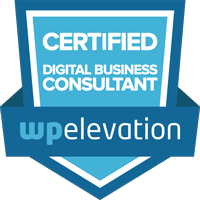Online Tools for Your Nonprofit or Foundation
The work you do at your nonprofit is so important. Maybe for your organization, it is even a matter of life or death for the people, animals or communities you serve. With that weight on your shoulders, having an online presence can easily become an afterthought. But in the world we live in today, in the minds of many people who could become your most enthusiastic and generous supporters, if you’re not online, you simply don’t exist. It’s important to continue growing your audience and the first place to start is online.
Digital media, email marketing, and websites drive prospective donors, clients and thought partners to your organization. Here are the basic tools and ways you should be using them to build and maintain relationships with your audiences.
Website
Online, your website is your central hub. Most people who looking for an organization like yours will start with your website. Develop a website that is an extension of your brand and the experience you provide in-person.
Keep your site updated regularly.
- Add upcoming events.
- Share impact stories and testimonials.
- Post photos and videos.
- Share press releases and other updates from your organization.
Make it easy for people to use your site.
- Share your business hours and location.
- Your contact information should be easy to find. We like seeing staff members and being able to access their contact information too--this is relationship-centric work afterall.
- Keep content organized and easy to understand.
- Allow people to give to your organization. The donate button should be super easy to spot.
Tools we recommend having for an easy to update, easily accessible site.
- WordPress: Use a website platform that your staff can update themselves. Our favorite is WordPress. WordPress has everything you need and can be set up relatively quickly. To get the most out of your site, find a WordPress developer who knows your business and will walk you through the entire process.
- Search Engine Optimization (SEO): Your website should be set up to be found easily in Google or any other search engine. In a WordPress site, use the Yoast plugin to get all the SEO tools you need for your site.
- Google Analytics: Analytics should ABSOLUTELY be on your site and you should be looking at your this information monthly. You can learn a ton about where your customers are coming from and what they are looking for on your site.
- Facebook Pixel: To support advertising and targeting customers on Facebook, we highly recommend adding a Facebook Pixel to the core pages of your site. The Facebook Pixel will capture the information of those that visit your website and add them to your audience on Facebook. This is a great way to get to know who is visiting your site a bit more.
Social Media
Social media is the place where you can continue to build community with your followers. The platform(s) you choose will vary depending on your organization and most importantly your target audience. Facebook is a pretty safe bet for getting started. From there think of the people you are working to build community with—are they business people? Maybe you should be on LinkedIn. Are they journalists? Get on Twitter. Millennials? Try Instagram. Teens? Check out Snapchat.
These are generalizations and this is an ever-changing landscape, but you get the point. There’s virtually something for everyone and you should be thoughtful when choosing where to spend your energy.
What you should be sharing through social media.
- Feature stories about your clients, donors, staff, board members, etc.
- Clever video and we recommend captioning it. A good bit of video is watched with no audio via social media.
- Having an event or making an announcement? Jump on Facebook Live or Instagram Stories and give your followers behind-the-scenes access.
- Promote your upcoming events.
- Share urgent needs.
- Tap into the media conversation. If legislation is being debated that impacts your organization, share your voice. Tell followers why something matter to your organization.
- Promote any content you are creating and adding to your website, including your blogs, photos, and publications.
Engage with your audience.
- Be responsive to all posts or questions on your page or in your feed.
- Thank followers for their comments.
- Turn negative comments into a positive.
- Listen to your audience, take their feedback in and make changes as you begin to see themes.
Create a process to make posting simple.
- Create a content creation cadence that you use regularly. Get into the habit of posting in the same way and create templates to make it even easier.
- Create an editorial calendar, so that you aren’t always having to think about what to post. (Speaking of an editorial calendar here’s a template you can use in AirTable)
- Use a tool like Sprout Social, HootSuite, or Buffer to schedule posts.
- Create a list of hashtags to use on a regular basis
Email Marketing
Email marketing is one of the best ways to connect directly with your customers. It seems a little counterintuitive because emails can be annoying, but the thing is email works and customers actually prefer getting email communications from brands.
Grow your list, your list is money - really.
- Are you collecting emails on your website? If not, do so immediately!
- Collect emails at your events.
- And an email line to your remittance envelope.
- Any where you interact with someone, capture an email.
If you have a list, don’t forget to reach out to them.
- Be consistent and send emails on a regular basis.
- Include valuable information about your organization, including program news, upcoming events, impact stories, donor testimonials and more.
- Always include a call to action—and it doesn’t have to be an ask for money. You could ask someone to share your message with a friend, like your organization on Facebook, read an article or call their legislator.
Tools we recommend to make email easy.
- MailChimp: MailChimp is free up to 2,000 contacts and allows you to design beautiful emails, schedule them out, add email sign ups to your website, and set up a bit of automation.
- AirTable and Asana: Manage regular posting and your editorial calendar with AirTable and your to do list in Asana. These tools help you keep everything in one spot and take away the stress of remembering what to do next. (Here is an editorial calendar template you can use in AirTable.)
Wrap Up
This post gives you an overview of all the tools your nonprofit or foundation can use to grow impact. Before you leave, don’t forget to check out AirTable and our free editorial calendar template.



